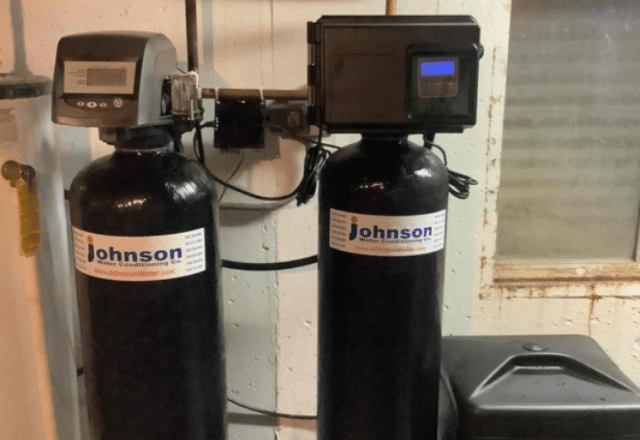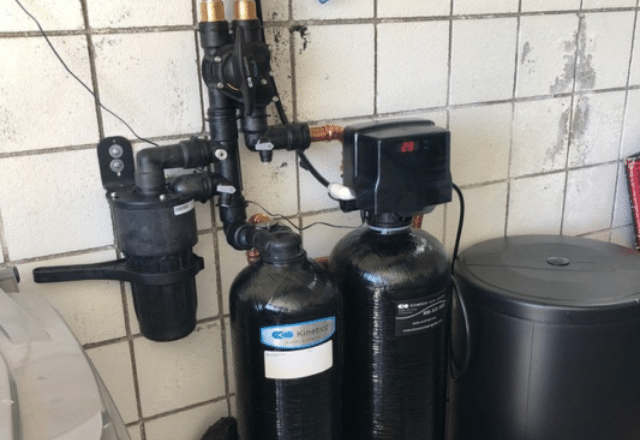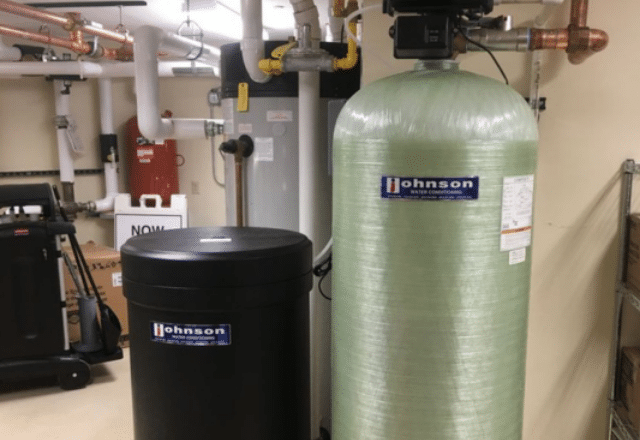
Water softeners play a vital role in homes with hard water, which contains high levels of minerals like calcium and magnesium. These devices work by exchanging these minerals with sodium ions, thereby softening the water. The process not only enhances the flow of water through pipes but also reduces the consumption of soap and extends the life of appliances by preventing scale buildup. However, softened water can sometimes affect water pressure in the home. Understanding the mechanics and potential issues of water softeners is essential to ensure they function efficiently, providing quality water for household use.

Water softeners, crucial for reducing mineral buildup in hard water, can face a variety of issues that impact their efficiency. One of the most common problems is the formation of a salt bridge in the brine tank, which occurs when a crust of salt forms, preventing water from properly mixing with the salt to create the brine needed for the regeneration process. This issue can inhibit the function of resin beads, leading to the continued presence of hardness minerals and iron in the water.
These issues can significantly impact water softener performance, requiring regular maintenance and occasional professional intervention to maintain optimal function and extend system lifespan.
Being aware of these common issues and their symptoms is crucial in maintaining the effectiveness of your water softener. Regular maintenance and prompt action when faced with these signs can prevent further complications and ensure a continuous supply of soft water.
For optimal performance, the regeneration process of a water softener must be correctly set according to the household’s water usage and the hardness level of the incoming water. Regular maintenance, such as checking the salt level and cleaning the brine tank, is crucial.
Neglecting these steps can lead to inefficiencies and shorten the lifespan of the softener. Additionally, if the household uses a water heater, it’s important to ensure that the softened water does not negatively impact the heater’s performance.
When troubleshooting a water softener, it’s important to identify the specific issue.
Salt bridging requires breaking up the bridge and ensuring that high-quality salt is used to prevent recurrence.
Check the power source to ensure that the unit is receiving the necessary electrical power. A disrupted or unstable power supply can lead to operational issues. Verify that the plug is properly inserted and the outlet is functioning. Additionally, inspect any electrical switches and connections for signs of damage or wear, which could impact the performance of the water softener.
Motor failure or other mechanical issues might display as error codes, which can be deciphered using the user manual.
The bypass switch, integral for maintenance and repair work, should be checked for proper operation.
When water hardness persists, check recharge timing settings – aim for 2-3 AM when water usage is minimal. Verify salt levels and inspect for bridges using a broom handle. Test water level in brine tank (should not exceed 12 inches). For units over 15 years old, replacement may be more cost-effective than repairs.
First check electrical – look for tripped breakers, loose wires, or broken switches. Listen for motor operation during cycle changes. Clean brine injector and check drain line flow. If motor fails to alternate between modes, verify warranty status before calling a professional. Simple power issues usually resolve with basic troubleshooting.
Yellow or smelly water indicates iron/manganese buildup or bacterial growth in resin tank. Clean resin bed with approved cleaner, check for pipe erosion, and inspect water main connection. Install new filter if needed. For persistent problems, professional cleaning of tank and pipes may be necessary.
For leaks, immediately: 1) disconnect power, 2) shut off water supply, 3) engage bypass valve. Top leaks typically indicate rotor valve issues, while bottom leaks suggest brine tank problems. Check O-rings in bypass valve, lubricate as needed. Inspect drain hose and softener hose for damage. For unidentifiable leaks, contact a professional.
If the problem is beyond basic fixes, it’s best to consult with a water treatment specialist. If the problem is beyond basic fixes, it’s best to consult with a water treatment specialist. They have the expertise for more complex water softener repairs, including handling popular water softener brands. Specialists can identify and replace damaged components, troubleshoot electrical power issues, assess signs of damage, and ensure all plumbing connections are properly configured and secure. Their professional assistance guarantees a thorough resolution to maintain your system’s efficiency.
To repair a water softener, start by addressing the most common issues: adjust the timer settings and check the regeneration cycle to ensure it matches water usage patterns.
Use high-quality salts to prevent salt bridging and ensure efficient operation. Regularly clean the resin tank and replace any worn-out parts.
If the issue is complex, such as a broken water entry valve or malfunctioning control valve, professional help may be required.
Regular water softener maintenance is the key to preventing serious problems with water softeners. By using high-quality salt, maintaining the correct settings, and performing routine checks, most issues can be avoided. This proactive approach not only ensures the longevity of the water softener but also saves on costly repairs. Regular servicing by a professional can provide peace of mind and ensure the system operates at its best.
1. Q: What causes a salt bridge in a water softener, and how can it be fixed?
A: Salt bridge issues in a water softener often result from high humidity or low-quality salt usage, leading to hardened salt layers in the salt tank. To fix this, break the crust manually and ensure you use high-quality salt to prevent future occurrences.
2. Q: How do I address brown water coming from my water softener?
A: Brown water can indicate sediment build-up or issues in the resin bed. Check the mineral tank for any sediment and consider using a resin bed cleaner to resolve the issue.
3. Q: What does it mean if my water tastes salty after passing through the softener?
A: Salty water typically signifies excessive salt build-up or issues with the regeneration cycle. Adjust the regeneration settings and ensure the salt level in the salt tank is appropriate.
4. Q: Can low water pressure be linked to water softener problems?
A: Yes, a loss of water pressure can be a sign of a water softener malfunction, possibly due to clogged water lines or a malfunctioning drain hose. Inspect these components for any blockages or damage.
5. Q: How does the quality of salt affect my water softener?
A: Using low-quality salt can lead to more frequent salt bridge issues and affect water quality. High-quality salts dissolve more evenly, reducing the risk of salt bridges and ensuring better water softening.
6. Q: Why is regular cleaning of the resin bed important?
A: Regular cleaning with a resin cleaner prevents the accumulation of minerals and maintains the effectiveness of the resin bed. This is crucial for maintaining the water hardness level and overall efficiency of the water softener.
I bring over 9 years of dedicated plumbing experience to the table. As a seasoned professional in the plumbing industry, I've tackled a wide range of projects, from residential repairs to large-scale commercial installations.

